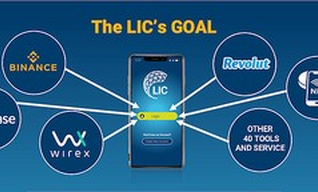How to Buy Ethereum [1]

Ethereum strives to become a one-stop Blockchain solution for all, a decentralized world computer that will perhaps one day change most currently existing services. The network enables basically anyone to build decentralized apps and generally use the network, as long as they own Ether. Ether is Ethereum’s native cryptocurrency that enables all operations within the Blockchain as well as its updates. There is a variety of ways of obtaining Ether, all of which are presented in this handy guide.
Exchanges to buy EthereumThe easiest and perhaps the most popular way of buying Ether is doing so through an exchange. Ether is the second most valued, stable and well-known cryptocurrency behind Bitcoin, so finding an online exchange that operates within your jurisdiction and trades in Ether won’t be that difficult.

First of all, you will need to register with an exchange. Before doing so, make sure it operates in the country you live in and accepts the currency you wish to trade in. The registration process will require submitting a few general personal details.
Often, there are full identity checks included later on, when it comes to withdrawals and deposits. In order to pass those checks, you will most likely need to provide a proof of address as well as a photo identification. This is done in compliance with Know Your Customer (KYC) and Anti-Money Laundering (AML) regulations.
After passing all the necessary checks, you will need to choose a deposit method. Depending on a particular exchange, there are various ways of doing so. They include bank wire transfers, credit and debit card payments, SEPA or PayPal payments. There is typically a small deposit fee charged by an exchange, which may depend on the deposit method. The fees details can often be found in the ‘about’ section or in the footer of an exchange’s website.
An absolute majority of exchanges accept US Dollars and Euros, with other major fiat currencies such as British Pound Sterling, Russian Ruble, Chinese Yuan, Japanese Yen and so on being accepted on some of the exchanges as well. It usually takes at least several hours for your deposited funds to appear in your exchange account, depending on a particular exchange and the chosen deposit method.
As soon as the funds are in your exchange account, you can start trading. The user-friendliness of this process depends on a particular exchange, with many of them striving to make the process as easy as possible. You will be able to get all the valuable information, such as current value, market capitalization and related news on your exchange’s website. Once you’ve obtained Ether, it is recommended you withdraw it into a designated wallet of your choosing. This guide will cover various ways of storing Ethereum later on.
Below is a list of some of the exchanges accepting Ethereum:
Name
Country
Deposit Methods
Minimum Purchase
GDAX
Worldwide
Bank wire transfer
$1
Bitfinex
Worldwide
Bank wire transfer
$10
Bithumb
South Korea
Bank wire transfers, Credit and Debit cards, Gift cards
N/A
Binance
China
Bank wire transfer
$1
Bitstamp
Worldwide
Bank wire transfer, Credit and Debit cards
$5
Kraken
Worldwide
Bank wire transfer
$5
Etoro
Worldwide
Bank wire transfer, Credit and Debit cards, PayPal payments
$200
Coinbase
Worldwide
Bank wire transfer, Credit and Debit cards
$1
BitPanda
Worldwide
Bank wire transfer, Credit and Debit cards
$25
Gemini
Worldwide
Bank wire transfer
$1
Buy Ethereum with cashDue to various reasons, some may prefer purchasing Ether anonymously, while simultaneously avoiding the hassle of going through Know Your Customer and Anti-Money Laundering related checks. Even though this might be frowned upon by regulators in some jurisdictions, it is possible to purchase Ether from an online peer-to-peer exchange like LocalEthereum.

LocalEthereum aims to do for Ether what LocalBitcoins does for Bitcoin, that is to facilitate over-the-counter trading of local currencies for Ether. The main difference is that LocalEthereum is a completely decentralized service, with escrow services and arbitrage being achieved through the use of Ethereum smart contracts.
The service works very much like eBay - it’s essentially a marketplace, which enables users to offer any local currency in exchange for a certain amount of Ether. Once the offer is accepted by a seller, the exchange of funds takes place automatically. Money can be transferred via bank wire transfer, credit and debit cards, PayPal payments as well as other major cryptocurrencies such as Bitcoin.
The service isn’t free. Sellers are typically charged a 0.25 percent fee, while buyers need to pay 0.75 percent, which is still significantly lower than most centralized exchanges offer. The processing of a transaction can take up to few hours, while miners are confirming the amount and are recording it into the Blockchain. As miners receive the transaction fee, it is possible to speed up the transaction by choosing a higher fee, giving the miners an incentive to process your transaction first.
LocalEthereum also enables the parties to exchange messages, so it is possible to set up an eye-to-eye meeting with a seller and exchange Ether for hard cash. When doing so, ensure that you meet in a public place and take every precaution necessary when conducting a financial transaction with a stranger. You will also need active Internet access to sign off for the transaction.
If you’re worried about setting up a one-on-one meeting with a stranger off the Internet, there is always an option of finding a local Ethereum or general cryptocurrency-related meet-up. There you can safely trade Ether, while simultaneously learning from and exchange opinions with like-minded cryptocurrency enthusiasts. A list of Ethereum meet-ups can be found on a dedicated page of Meetup.com.
Trading Ether peer-to-peer is by far the most private and secure way available. Moreover, it offers unparalleled flexibility when it comes to trading pairs, as well as no buying or selling limits. However, this way of trading requires certain level of trust between the two parties, especially when meeting in person. On top of that, if you’ll decide to engage in over-the-counter trades, it is your responsibility to ensure you’re complying with your local regulations.
Ethereum ATMAn alternative way of purchasing Ether is doing so through an Ethereum ATM. It is perhaps and ideal way to obtain Ether for users, traders and investors looking to buy small amounts. The vast majority of cryptocurrency ATMs limit transactions to relatively small amounts so that there is no need to comply with Know Your Customer and Anti-Money Laundering regulations, which means there is no need for full identity verification.

Before being able to use a cryptocurrency ATM, you will need to get a wallet. Different kinds of Ethereum wallets and ways of setting them will be covered by this guide later on.
Once you have a wallet, you will need to locate your nearest ATM that facilitates Ether transactions. There is a handy service called CoinATMRadar, which provides a comprehensive list as well as a map of cryptocurrency ATMs. Although the service focuses on Bitcoin ATMs, you can use a search bar on the map to find local ATMs that also trade in Ether and some other major cryptocurrencies.
After locating your nearest ATM, find a QR-code in your wallet and hold it up to the machine’s camera so it can scan it. Then, insert your cash into the ATM and confirm the amount of Ether to complete your purchase. The Ether you purchased will be sent to the provided address. The transaction normally takes around 30 minutes, but it might take up to several hours in some cases.
Ethereum walletsBefore buying Ether, it is essential to gain a good understanding of wallet software and how Ethereum transactions work in general. There are several different types of wallets: a desktop application, a mobile/web app, you can use a hardware wallet as well as a wallet provided by a cryptocurrency exchange. There are official Ethereum wallets available for download at Ethereum.org.

Another thing to consider is whether you want to use a so-called ‘full node’ wallet, which requires you to download the entire Ethereum Blockchain (many gigabytes in size) or a ‘light client,’ which doesn’t require a full Blockchain to operate. Of course, if you’re new to Ethereum, a light client would be a preferred option. MyEtherWallet provides light client wallets. Atomic Wallet a popular crypto solution, allows you to Buy Ethereum right in the app, it also supports other cryptocurrencies and exchange more than 500 coins.
If you’re buying your Ether from an exchange, using a wallet provided by the same platform is the easiest option, but it’s probably the least secure option to store your funds. Unfortunately, the cryptocurrency world is filled with instances of exchanges falling under hacker attacks. If a hack happens and someone steals money from the exchange, including the users’ wallets, an exchange is extremely unlikely to refund its customers.
Thus, using a desktop, mobile or online wallet is a more secure option, as it provides users with full control over their funds. There are still some precautionary security measures that need to be taken. Most importantly, you should keep your wallet’s password, which is called a ‘private key,’ a secret. Moreover, if you lose or forget it, there will be no way of accessing your wallet ever again, and whatever funds you’ve had there will be essentially lost. Finally, setting up a two-factor authentication to access your wallet would also be a good idea.
If you intend on storing large amounts of Ether, you can take an extra security step by investing in a hardware wallet. Such devices don’t connect to the Internet, they generate and store your private key offline. This essentially mitigates the risk of digital theft, which is the most common vectors of attack on cryptocurrency holders. There’s also a recovery password provided by the device upon the creation of a wallet, and a PIN code is used to access the device itself.
Apart from your wallet’s password, a private key that you will need to access it and sign for transaction, your Ethereum wallet will generate several receiving addresses, which are known as ‘public keys.’ Those addresses can be distributed safely without risk of theft. People wishing to send some Ether to you will use one of those addresses to do so.
Ethereum transactions take around 20 seconds to go through. Once it happened, it means that the transaction was deemed legitimate and was added to the Blockchain, where it’s visible to anyone. It is important to note, though, that the only information about the transaction stored there is the receiver’s address and the amount of Ether sent.
Difference between Ethereum and Ethereum ClassicEthereum and Ethereum classic are essentially two different platforms, split from one original Ethereum after a ‘hard fork’ approach was implemented as a response to around $150 mln worth of Ether being stolen by a hacker. The two platform exist on different Blockchains, which are completely identical all the way until the hard fork happened. Ethereum became a new platform, with new rules that were implemented to avoid such hacker attacks in the future. The majority of users, developers and decentralized applications have migrated to Ethereum, while around 10 percent of others have stayed with Ethereum Classic.

The split is mostly ethical and ideological. Those who stayed with Ethereum Classic were the strong supporters of ‘code is god’ principle and believers in the immutability of the Blockchain. However, the split can be viewed as a landmark for the Ethereum community, as it managed to come together and handle the worst hack in the cryptocurrency history.
The biggest issue with Ethereum Classic is perhaps that it isn’t backward compatible with the Ethereum hard fork. This means that all of the updates and improvements implemented in Ethereum are not available for and are not compatible with the Ethereum Classic network.
When it comes to Ethereum, the single most important consequence of a hard fork is the actual fact that it took place. Many people believe that it opens up possibilities for future hard forks, and some are even speculating that leaders of the Ethereum community might manipulate a hard for their own benefit. The new Ethereum platform is also criticised for allowing the community to make a substantial change in the network while going against its mathematical objectivity, something that it was always hailed for.
In terms of value, at the time of writing Ethereum was worth $735.83, while Ethereum Classic was valued at $34.07. Both tokens have been recording steady increases for a while now. Moreover, their price seems to correlate. Without a doubt, both cryptocurrencies are worth the investors’ attention.
Is it too late to invest in Ethereum?Ethereum as a project is still very much in development. If it will achieve what its creators set out to achieve - becoming a world computer, while enabling micropayments between machines as well as completely borderless and trustless transactions between people - then it very obvious that it’s not too late to invest in Ethereum.
Ether has already established itself as second most trusted, stable and strong cryptocurrency to date. As the platform is developing and providing its creators will keep improving it, the value of Ether is only going to go up. Some people think that in the foreseeable future when the platform achieves its goals, the price might stabilize and stop growing.
But, as is the case with any cryptocurrency, it’s very difficult to predict its long-term value. In 10 years time, Ether can be worth nothing, or it can be valued at a virtually uncapped amount that can only be imagined.
Check out more:
Ethereum price index
Ethereum Price Analysis
Transacting Ethereum safely
One of the most important aspects of the Ethereum network is that there is no charge back - once the funds are sent, there is no way of getting them back or reversing a transaction. So, be sure to never type the address by hand, as it is essentially a very long and case-sensitive string of random letters and numbers. One single mistake can lead to your funds disappearing forever. So, make sure to double-check all the details before confirming a transaction.
Avoid storing a large amount of Ether in wallets provided by exchanges. As an exchange is essentially in charge of your wallet, you are not completely safe from loss of funds, which may occur due to a hacker attack or even an exchange’s fraudulent activity. Desktop, online and mobile wallets are safer options. If you’re intending on storing large amounts of Ether, consider investing in a hardware wallet.
Implement extra safety steps where possible, such as two-factor authentication, multi-signature wallets, and so on. Finally, always remember that your private key is the only way for you to access your Ether. Take extra care not to lose it or let it be stolen from you.
Read the full article










